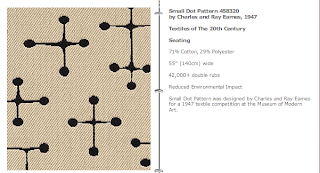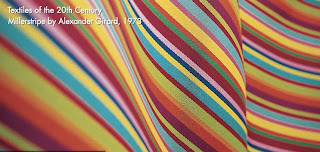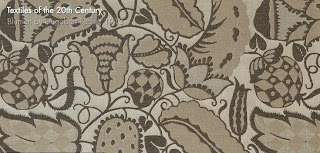





About the designers:
A founder of the Wiener Werkstätte, Josef Hoffmann is noted for his prescient shift away from the literal, representational patterns of the times, toward the abstracted, geometrical motifs of early modernism. Influenced by the Austrian Arts and Craft movement, the Wiener Werkstätte embraced simplicity, local materials and craft traditions in reaction against "useless" gingerbread ornamentation and industrial mass production.
Created by Josef Hoffmann in 1913, Design 9297 was never manufactured, and still retains the name assigned to it in the mill archive. To develop the palette, the Maharam Design Studio drew on color references from the early 20th Century, including other examples of Hoffmann's work.
Although the original trial sample from 1913 was created with a tapestry construction, the re-edition is rendered in a satin weave; this change in construction creates an elegant sheen and purity of color that further highlights the strikingly modern and graphic nature of the design.
Dedicated to accurate documentation, Textiles of the 20th Century® pays homage to the great multi-disciplinarians of the last century and brings their enduring work in textiles back to life.
Noted as one of the 20th century's most influential modernist designers and architects, Alexander Girard achieved prominence as director of Herman Miller's textile division from its formation in 1952 through the 1960s. His attention to tone, texture, and pattern translated into vivid fabrics that emphasized strong forms and bold colors. Other noteworthy projects include Girard's design of La Fonda del Sol restaurant (1959) and the Good Design exhibition at Museum of Modern Art in New York (1954).
Conceived as part of a larger collection of interior finishes, Roman Stripe was intended as a two-dimensional background, and utilizes strong geometric forms and nuanced color combinations to create visual texture and movement. Originally offered as silk-screened paper, the Maharam Design Studio re-engineered Roman Stripe as a contract wallcovering using an innovative non-PVC substrate.
Maharam has re-issued a total of thirteen Girard patterns, including Alphabet (1952), Checker (1965), Checker Split (1965), Circles (1952), Double Triangles (1952), Facets (1952), Jacobs Coat (1959), Mikado (1954), Millerstripe (1973), Quatrefoil (1954), Roman Stripe (1952), and Toostripe (1965).
Dedicated to accurate documentation, Textiles of the 20th Century® pays homage to the great multi-disciplinarians of the last century and brings their enduring work in textiles back to life.
Description
Ray and Charles Eames conceived of Dot Pattern for the Museum of Modern Art's Competition for Printed Fabrics in 1947. Initially introduced as a woven upholstery, Dot Pattern Sheer Positive is true to the original scale of the design. To create the airy positive/negative effect, Maharam has utilized a sophisticated burnout process commonly used in Europe, enabling the creation of depth and substance not possible in a simple printed sheer.
Maharam has re-issued a total of seven Eames patterns, including Circles, Crosspatch, Dot Pattern, Dot Pattern Sheer Negative, Dot Pattern Sheer Positive, Sea Things, and Small Dot Pattern, all of which were designed in 1947.
Dedicated to accurate documentation, Textiles of the 20th Century® pays homage to the great multi-disciplinarians of the last century and brings their enduring work in textiles back to life.

Visit Maharam at



No comments:
Post a Comment